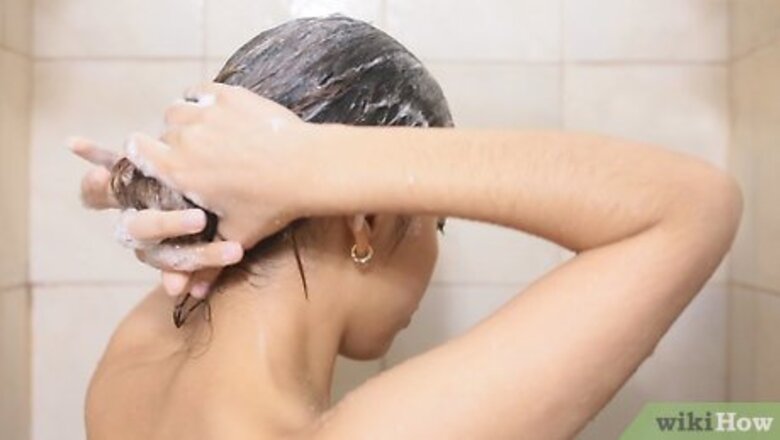
views
Preparing Your Hair
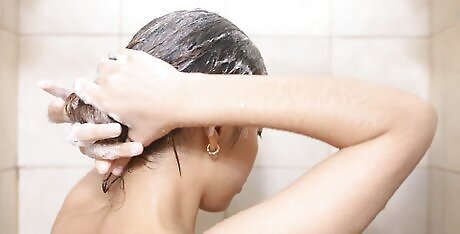
Wash and dry your hair until damp. Wash your hair, then blow-dry or allow it to air dry until slightly damp. Blow drying may make your hair a little straighter already, saving you some time.
Brush or comb your hair. Remove all tangles. The heat protectant will distribute more evenly if you brush or comb thoroughly beforehand. There should definitely not be any tangles left by the time you start straightening, or the process will leave crimps and knots.
Apply heat protectant. Spray lightly onto your entire head of hair. Quickly comb your hair a second time to distribute the heat protectant evenly. Damp hair absorbs heat protectant more effectively, but you can still apply it to dry hair. You may use argan oil or other natural heat protectants instead, but set the iron to a low temperature to protect your hair further. This will make it less effective.
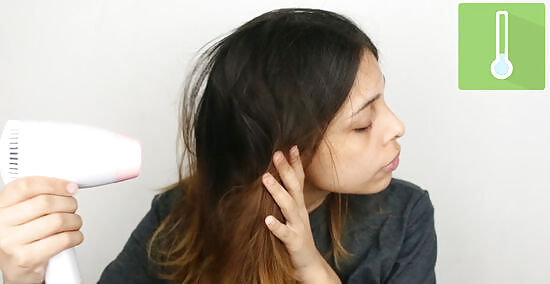
Finish drying. Blow-dry or allow to air dry completely. Never straighten your hair while wet, as the iron may burn or damage wet hair.
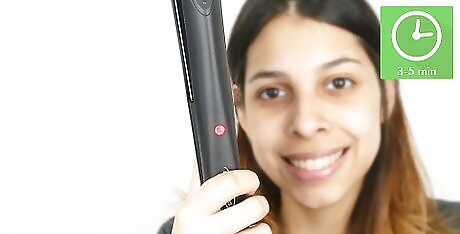
Let the iron warm up. Plug in the flat iron and let it heat up for three to five minutes, while you get started on the next step. Choose a temperature setting based on your hair: For thin hair, use the lowest heat setting. For average hair thickness, use medium heat (about 300–350ºF / 150–177ºC). For thick hair, use high heat (400–450ºF / 200–232ºC). To be safe, you may want to start lower and work your way up until you can straighten the hair in one pass. If you aren't using heat protectant, use low temperatures only. Be aware that there is a high risk of burning.
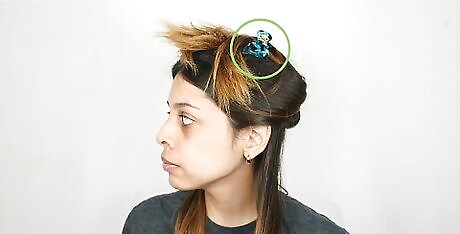
Section off your hair. The thicker the hair, the more sections you need. People with thin hair can skip this step or divide it into two to four sections, while people with thick hair may need many more. Clip every section out of your way, except for one section of the lowest layer. You'll be working with locks of hair 1–2 inches (2.5–5 cm) thick. Each section can include several locks of hair, as long as it's convenient and easy to separate and hold one lock at a time. Section off the top section of your hair by lifting it and tying or clipping it in a half ponytail. You'll need total access to the lower layers of hair.
Using the Iron
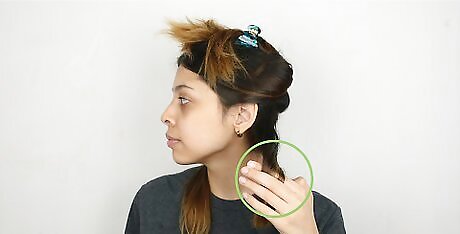
Separate a lock of hair. Starting with the lowest layer of hair, separate a lock of hair 1–2 inches (2.5–5 cm) wide. This should be small enough that you can fit the flat iron around it easily, and straighten it in one pass.

Clamp the iron above the roots. Place your flat iron 1–3 inches (2.5–7.5 cm) above your scalp. Close the two heated sides together, with the hair between them. Straightening too close to your scalp may damage the roots or burn your scalp. Be sure not to clamp too firmly, as this will create a ridge at the top of your hair. Leaving the iron in one place for too long will also cause a ridge. If there is excess hair falling out of the iron, open the iron and try again with a smaller amount of hair.

Run the iron down the length of your hair. Slowly run the iron down the length of your hair. Keep the same amount of pressure on the hair at all times. Don't twist or move the iron from its path, or you may end up with crimps in your hair. It is normal to see steam coming from your hair and the iron. Your hair is not burning; this is just the heat protectant evaporating a little. If you see a lot of steam, or smell burning hair, move the iron more quickly. If your hair is particularly curly or frizzy, start with a few short strokes near the top, before dragging slowly as described.
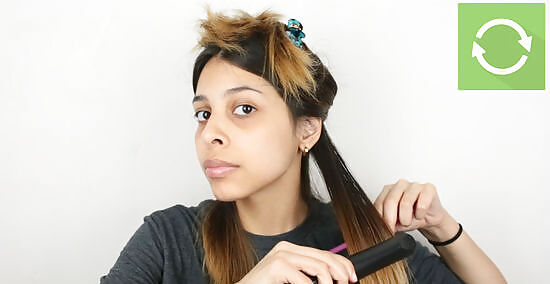
Repeat if necessary. If the lock of hair isn't straight after the first try, go over it a second time. If this keeps happening, use smaller locks of hair or raise the iron temperature. Multiple passes with a low-temperature iron can cause more damage than a single pass with a high-temperature iron.
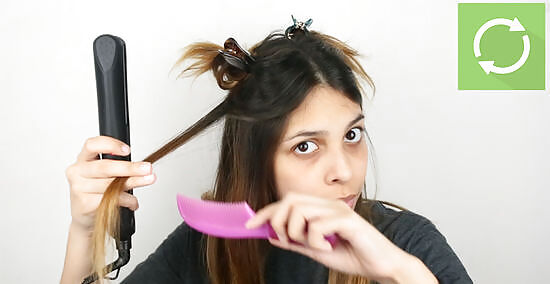
Repeat with all remaining locks. Once you've finished one section, unpin the next and repeat. Work from the lowest layers of hair up to the surface. Pay extra attention to the very back of your head. It's easy to miss a kink hiding out of your sight.

Smooth down your hair (optional). If you're left with a few flyaway hair strands, try smoothing them down with one of the following: Rub in a drop of hair oil, about the size of a pea or even smaller. Spray a little hairspray over the flyaway strands and comb them down. You may apply hairspray over all your hair to protect from wind and moisture. Hold the can 12 to 14 inches (30–38 cm) away from your hair.
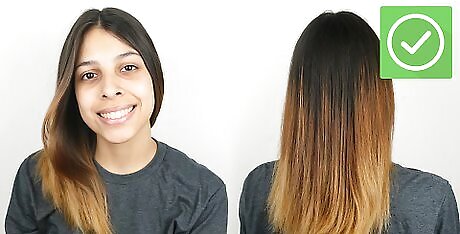
Finished.











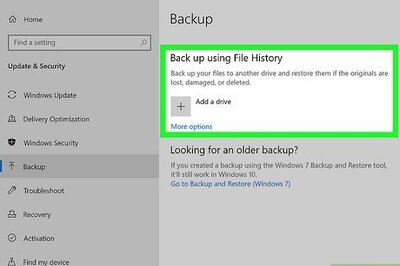


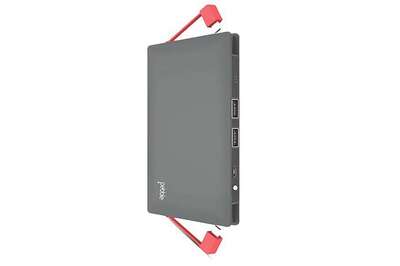




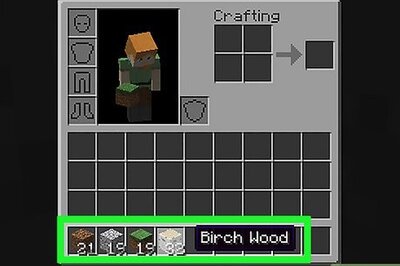
Comments
0 comment